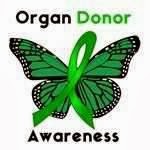BOO!
Happy Halloween Kidney Warriors! I'm so happy to be celebrating my favorite night of the year. Influenced by the Celtic harvest festival called Samhain, a night when people wore costumes and lite bonfires to ward of ghosts and evil spirits. It was celebrated as fall turned into winter. After being Christianized in the eighth century by Pope Gregory the III it was celebrated as a dedication to the dead remembering the saints, martyrs and the dearly departed and was referred to as All Saints Day. Some of the Celtic traditions of wearing costumes and lighting bonfires remained. The evening before was called All Hallows Eve and that's what became our modern day Halloween and we celebrate it on October 31st. throughout the world. We still honor the tradition of wearing costumes and today we light jack~o~lanterns to ward off ghosts and evil spirits. Halloween has become a secular holiday and is geared for children as they go house to house trick~or~treating receiving treats along the way. It's a fun filled holiday filled with scary stories and haunted houses. The scarier the better.
One of the best parts of Halloween is the sweet treats but as kidney patients we need to stay on track with our kidney friendly diets. So here is a list of some sweet treats you can feel free to indulge in: popcorn balls, jolly ranchers, lifesavers, gumdrops and jellybeans. A few treats that you want to eat in limited amounts would be caramel apples and toffee. You want to stay away from treats filled with chocolate and nuts as they contain lots of phosphors and potassium. As kidney patients we don't have to feel left out, we too can enjoy in the sweet treats of Halloween but we just need to follow some guidelines.
Thankfully over the last few years more and more adults have been participating in Halloween activities like haunted hayrides, costume contests, and elaborate Halloween parties. These are just a few reasons why I love Halloween so much. The thrill of being scared and going trick~or~treating as a child with my parents are just a few of the fond memories of mine. But what I love the most about Halloween is the ability, for one night a year, to pretend your something/someone else. It's the one night of the year I get to pretend there is no kidney disease.
I hope you enjoy your Halloween night and indulge in all those kidney friendly treats. I also want to remind everyone that there are only a few days left in October and the Campaign 4 Life! Please encourage people to sign up on the Donate Life Registry and let's all help raise awareness for organ donation. We need to improve donor rates for all those waiting!
Thank you for joining me once again for this Halloween edition of All Things Kidney. Keep on fighting all you Kidney Warriors!
~ Kidney Blogger





















